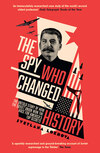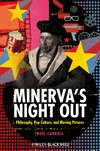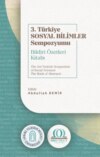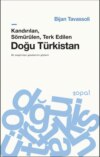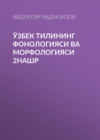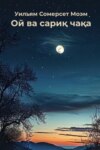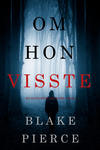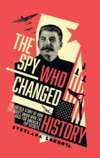Kitabı oku: «The Spy Who Changed History», sayfa 2

INTRODUCTION
On the hot summer’s day of Sunday, 3 August 1947, a large crowd of Muscovites gathered at Tushino airfield for Aviation Day.1 From early morning they had made their way in their thousands to secure a grassy bank as a vantage point from which to watch the aerobatics and parachute jumps. They waited expectantly to cheer and applaud the heroic pilots, set to perform dizzying barrel rolls and stomach-turning loops.
The stars of the show were a new generation of military aircraft. The message that Soviet leader Joseph Stalin sent to his people and the watching world that day was clear: the Cold War had begun in earnest and his air force was equipped to respond to any threat. In the words of the rousing ‘March of the Soviet Aviators’,2 which was constantly played:
Our keen sight is piercing every atom,
Our every nerve in determination dressed
And trust us, to all enemy ultimatums
Our Air Fleet will give a quick response.fn1
On the VIP balcony, to the left of the grey-haired Stalin in his generalissimo’s uniform, stood a galaxy of Soviet aircraft designers – Alexander Yakovlev, Semyon Lavochkin, Sergey Ilyushin, Pavel Sukhoy, Artem Mikoyan, Mikhail Gurevich,fn2 and the greatest of them all, Andrey Tupolev – who had given their names to a series of iconic military planes. As befitted a day dedicated to celebrating the country’s air force, each man was resplendent in uniforms decorated by rows of gleaming medals.
Standing alongside the diminutive aircraft designer Tupolev was the far taller figure of Colonel Stanislav Shumovsky, a graduate of the Massachusetts Institute of Technology (MIT). The affable, bespectacled Shumovsky was Tupolev’s friend and long-term collaborator; perhaps more significantly, he was also the most successful aviation spy in history. His latest intelligence coup, which he was still celebrating, had been to bring all of defeated Nazi Germany’s advanced jet and rocket technology back to the Soviet Union.3 But he had enjoyed his most significant successes in the USA, where he had operated with impunity since his arrival at college in 1931.

Colonel Shumovsky in air force uniform
Shumovsky pointed out to the stocky Tupolev the faces of the foreign military attachés, who were standing in a separate enclosure. The observers expected to see a parade of prototype jet fighters scream across the sky. The Russians’ plan was to enjoy watching the faces of the American military observers behind their gleaming sunglasses.4 Little did the foreigners know that Tupolev had one major surprise up his sleeve. For the last two years, at the behest of Stalin, he had worked day and night on the Leader’s pet secret project. Uncle Joe, with his flair for combining politics with a flamboyant brand of showmanship, wanted to send a clear message that would have military men in Washington, London, Paris and beyond choking on their tea, and reaching in panic for something far stronger. Thanks to Tupolev’s unceasing, bone-shattering effort, that message was about to be delivered.
After the national anthem and a massive artillery salute, the crowd stood to watch the planes, shielding their eyes with their hands or using binoculars. From the distance, they could hear a faint hum that grew ever louder. Three dots emerged from the patchy clouds, becoming recognisable as giant planes. These were something new from Tupolev, his gift for the Red air force: a four-engined strategic bomber, the Tu-4. Despite the bright red stars on the planes’ tails, the foreign military attachés thought at first this was a simple publicity stunt. Surely the three Tu-4s were just recycled US B-29 Superfortresses? In 1945, three B-29s had made emergency landings in the Soviet Far East while conducting bombing missions against imperial Japan. Perhaps the Soviets, who the military attachés assembled here knew were incapable of producing a high-altitude strategic bomber, had just patched up some American planes with a slick paint job?
Then another dot appeared. It was the Tu-70, a Tupolev-designed passenger version of the Tu-4, and its presence demonstrated that the Soviets were now somehow able to mass-produce their own strategic bomber fleet. Tupolev and Shumovsky glanced over at the American observers, who now looked aghast, deafened by the roar of the colossal aircraft flying above. For them, and indeed for every other Westerner present, it was manifestly clear that the global balance of power had shifted irrevocably to the Reds. Every inch of their territory – the capital cities and industrial heartlands which had long been considered safe from Soviet counter-attack – was now within reach of its modern heavy bomber fleet. This was a crisis. Now all the Soviets needed was the atomic bomb.
• • •
Two years later, on 29 August 1949, at Semipalatinsk in the Kazakh Soviet Republic, Russian scientists detonated ‘First Lightning’,fn3 their atomic bomb. The FBI started a massive, frantic investigation to find how out the ‘backward’ Soviet Union could possibly have accomplished this scientific feat.5
One line of enquiry led the Bureau to search for a shadowy figure they codenamed FRED, a Soviet espionage controller with links to the heart of the atomic programme. For a while, the FBI suspected that FRED was Stanislav Shumovsky.6 Based on information from an informant named Harry Gold, they made the correct assumption that the linchpin in the atomic plot was an alumnus of one of the United States’ finest universities, the Massachusetts Institute of Technology. But FRED was not Shumovsky. Stanislav had left the United States long before his aviation espionage exploits were exposed to the FBI. Despite turning over every stone, the Bureau never understood that Shumovsky was just one of many top Soviet spies, all alumni of MIT, and part of an operation that had been up and running for nearly two decades. This is Shumovsky’s story, which the FBI, with all their resources, failed to uncover.
• • •
The first leaders of the Soviet Union Vladimir Lenin and his successor Stalin had always felt threatened by the stronger and technologically superior forces that surrounded their new state. For its security, the Soviet government knew it needed to close the technology gap with those powers it considered potentially hostile, which was virtually everyone. Luckily for the Soviet Union, the nations they perceived as enemies had a flaw. Western countries never understood the value to the USSR of the knowledge and technology they were prepared to trade, teach or simply give away. In particular, Stalin took the decision as early as 1928 to rely on American manufacturers as the Soviet Union’s main supplier of aviation technology.7
On Stalin’s orders, seventy-five Soviet students, including Shumovsky (NKVD codename BLÉRIOT)8 slipped almost unnoticed into the United States during the hot summer of 1931.9 They did not tell the Americans welcoming them to their country that several of the students were also intelligence officers. Stanislav Shumovsky, the first super-spy, was in the vanguard of a mission that by its conclusion had achieved the systematic theft of a large quantity of the US’s scientific and technological secrets – including its most prized of all, the Manhattan Project. But until now, the audacity of the scheme has not been understood or appreciated by the American public, the universities or even the FBI. The mission was distinguished by its daring – Shumovsky would openly film inside America’s most secret sites while wearing his full Red Army uniform;10 its scale – the volume of secrets plundered dwarfs the impact of Cambridge University’s ‘Magnificent Five’ traitors;fn4 and its success – with the fruits of the operation, Stalin was able to bridge the technological gap between the USSR and the USA, equip his air force with a strategic bomber capable of reaching Chicago or Los Angeles, and arm his country with its own nuclear weapons.
‘Stan’,11 as Shumovsky styled himself during his years in the United States, never shot a man in cold blood, never jumped from a burning building (although he was not immune to moments of James Bond-like indiscretion with women).12 Instead, the charismatic, charming and fearsomely clever Soviet intelligence officer cultivated an extrovert image that helped him obscure the cloak-and-dagger work he was conducting. The scheme was simplicity itself. While on campus, Stan’s role was to spot American scientists working in areas of interest to the Soviet Union, approach them on a personal level for cooperation, and subsequently collect information from them. Shumovsky would eventually acquire US secrets on everything from strategic bombers to night fighters, radar guidance to jet engines.13 Each acquisition saved decades’ worth of research and millions of dollars of investment – he secured them for his country at almost no cost.
During his mission, Shumovsky would build a network of contacts and agents in factories and research institutes across the USA. Undiscovered for fifteen years,fn5 he masterminded the systematic acquisition of every aviation secret US industry had to offer. Uniquely, he worked hand in hand with top aircraft designers and test pilots. Designer Andrey Tupolev, one of the world’s greatest experts in ‘reverse-engineering’ (the dismantling and duplication of technology), would present Shumovsky with a ‘shopping list’ of information he needed to solve specific technical issues. What sets Shumovsky’s career apart from those of other intelligence operatives is that he went further than merely gathering information. As talented a scientist as he was a spy, on his return to Russia he established a research institute to analyse and exploit the secrets his network gathered in America and elsewhere.14
• • •
If the trail-blazer Shumovsky had not discovered the usefulness of an MIT education, there would have been no Ethel and Julius Rosenberg, no Klaus Fuchs;fn6 the world we know today would be a very different place. To an extent that has never been acknowledged before, the Soviet Union’s survival during the Second World War was underpinned by the technological and manufacturing secrets, plundered from US universities and factories, that enabled the development and mass manufacture of the aircraft and tanks needed to defeat the Third Reich.
Yet Shumovsky is virtually unknown outside Russian intelligence circles. His service records remain classified. Paradoxically, it is his very obscurity that demonstrates most comprehensively his success: we inevitably know most about the spies who were caught or turned traitor. In 2002, on the centenary of his birth, Shumovsky’s biography was published in Russia by MFTI (the Moscow Institute of Physics and Technology), the university that he helped found in 1946. It celebrated his life and achievements as a scientist and educator.15 But there was a thorny problem to skate around: how to explain in an article that the founder of this prestigious place of learning was one of Russia’s greatest spies. The Institute admitted they had few biographical details of Shumovsky’s earlier career to rely on as he had worked there later in his life. Yet the Journal of Applied Mathematics and Technical Physics was able to publish a very warm but anonymously authored biographical sketch of him. Out of respect, and from a desire for completeness, the Institute turned to an unusual source for more information. As the Journal stated euphemistically, ‘for reasons which, on the basis of the text, we can only guess at, the authors have concealed their names under the collective pseudonym “Colleagues and numerous scientific school pupils of S. A. Shumovsky”.’16 The contributors were in fact his friends and colleagues from the intelligence service, who had access to Shumovsky’s still-classified personnel file. To remove all doubt as to their identity, the anonymous contributors added a footnote to the article that says: ‘It is no coincidence that the portrait of Stanislav Antonovich Shumovsky was placed in the “Hall of Fame” Memorial Museum of the SVR [Foreign Intelligence Service] at Yasenevo.’17
Only the employees of the Russian secret service are allowed inside the Hall of Fame. This is as close as Shumovsky has ever come to an official recognition by Moscow of his achievements as a spy.fn7
Stanislav Shumovsky is known rightly as one of the fathers of Russian aviation. This is the first full account of the unusual and surprising methods that he used to achieve his personal dreams and the goals of the Soviet Union.

1
‘SON OF THE WORKING PEOPLE’
Joiningfn1 an exhilarated crowd heading back to Moscow from Tushino airfield and thrilled by the successful parade of new Soviet air power, Stanislav Shumovsky reflected on his extraordinary life. His mind drifted to the very first time he had seen a man fly, in his home city of Kharkov where he had stood as an eight-year-old in another large crowd, gripping his father’s hand tightly with excitement. It was the summer of 1910 and, just like the rest of the vast Russian Empire, the young Shumovsky had caught aviation fever.
A year before, Shumovsky had clipped from the newspaper a picture of his lifetime hero, the French aviator Louis Blériot, taken after his epic flight across the English Channel.fn2 The news announced an era of daring long-distance flight. For the sprawling Romanov domain, now covering over a sixth of the world’s land surface from the frontiers of Europe to the Far East, powered flight opened a world of new possibilities. Shumovsky also saved a newspaper clipping from the same year of the now-forgotten Dutchman who had been the first to pilot a flimsy plane from Russian soil. Unfortunately, he managed just a few hundred yards, but even this meagre feat enraptured the nation. The next summer, Shumovsky’s clippings book bulged with articles showing, to the delight of vast crowds, intrepid Russiansfn3 climbing aboard imported aircraft to ascend a short, noisy distance into the sky. Everyone, but especially Shumovsky, wanted to see with their own eyes these miraculous machines and the heroes who flew them. Now, finally, it was Kharkov’s turn. Determined not to miss the event, Shumovsky had made his father promise weeks before that they would go together.
The day was set to become a landmark event in his life. For the last week, the local newspapers had been posting on the boards outside their offices stories designed to whip up excitement to see the new triumph of science. A French-designed, but Russian-built Farman IV had finally come to town. The early plane with its many wings looked to the sceptical eyes of the crowd more like an oversized kite, yet somehow the wheezy engine of this ungainly, flimsy jumble of pine, fabric and wire was capable of propelling the pilot and his nervous passenger into the sky. The crowd held its breath and after an uneven and uncomfortable take-off, the plane lifted from the ground, then turned slowly to the left to circle the field before attempting an even bumpier landing. Shumovsky pulled at his father’s hand to be allowed to join those chasing after the landing aircraft, eager to congratulate the pilot and his passenger, and to see up close this conqueror of gravity. The flight had lasted only a few minutes but its impact on Shumovsky was to last a lifetime. It fired a passion for aviation: he wanted to become a pilot.
Stanislav Shumovsky was born on 9 May 1902,1 the eldest of four sons of Adam Vikentevich Shumovsky and his wife, Amalia Fominichna (née Kaminskaya). His parents were not ethnic Russians but Poles. The family treasured their traditions, practising Catholicism and speaking Polish at home.2 Shumovsky belonged to an old noble family dedicated to public service. According to family legend, the Shumovskys had moved to Poland from Lithuania about six hundred years before with the conquering King Jagiello.3 The Polish government commissioned a statue of this long-forgotten king for their display at the 1939 New York World’s Fair.fn4 (The prize-winning Soviet stand, adorned with statues of Lenin and Stalin, in contrast boasted a full-scale model of a Moscow metro station.)4 Since the family move, successive generations of Shumovskys had valiantly served first the Commonwealth of Poland and Lithuania and now the twin-headed Russian eagle.5
Shumovsky’s father was an accountant and bank official working for the Tsar’s State Treasury in the thriving commercial city of Kharkov. His mother Amalia was born a noble. Her own father was the manager of the large estates of the noted Polish Prince Roman Damian Sanguszko in nearby Volyn province. Amalia was a talented pianist6 and ensured her boys spoke French and German.7 As was expected among the tiny professional class of the time, family life revolved around musical and literary evenings where their mother would showcase her talent. The youngest of the Shumovsky boys, Theodore, recalled a vivid memory of their genteel, comfortable life. He described in his autobiography (appropriately, as events turned out, entitled The Light from the East) ‘a large room with two windows; in the space between the windows stood a piano, that my mother plays. Her face, framed by her wavy black hair and her eyes focused far away, as always happens, when one surrenders to music.’8 Theodore grew up to become a dissident academic and today is celebrated in Russia while his elder brother Stanislav, who devoted his entire life to building the Soviet Union, is almost forgotten.fn5
As a member of the gentry, Shumovsky’s father Adam was entitled to patronage. For his four sons that privilege meant they could attend the Gymnasium in Kharkov.9 Its curriculum encompassed a view of the world that included modern science, Shumovsky’s passion. Less fortunate children growing up in the city at the same time managed, like the overwhelming majority of the Emperor’s 125 million subjects, perhaps three brief years in a church charity school10 where the priests reinforced the principles of autocracy, unquestioning loyalty to God and His representative on earth, the Tsar. At Shumovsky’s school, the teachers explaining the miracle of powered flight only increased his desire to see the sight for himself.
The annual International Trade Fair was the one time of year when the inventions and curiosities of the world were brought to the excited citizens of Kharkov. Like the country, the city was in the midst of massive social transformation. Kharkov was proud of its place at the forefront of developments and firmly part of a new Russia. Like its rival, the then capital city of St Petersburg, it was a window through which Russia looked to the West, to Europe. In contrast with provincial Moscow and Kiev, which were far more traditional, religious and backward, Kharkov embraced progressive thought and modern inventions. Blessed with a wealth of natural resources such as coal, iron ore and grain, the city was newly affluent. Sitting in the centre of the rich black soil of the Ukrainian plains and with an enormous new railway station, Kharkov was the leading transport hub and undisputed commercial centre of southern Russia. Shumovsky’s father’s job was to help regulate the numerous private sector banks that financed the ever-growing agricultural and mining enterprises. The city was a hive of steel-making and coal-mining, the epicentre of Russia’s Industrial Revolution. Almost 300 automobiles jostled to drive along the few paved roads, past the horse-drawn taxis and slow-moving peasant carts.11
It should have been a wealthy and happy place. It wasn’t; indeed, it was impossible to live in the sprawling city and remain unmoved by the inequality and social division which were the result of its rapid economic expansion. Shumovsky saw the evidence each day on his way to school as he passed the dispossessed peasants sleeping rough on the street. While Kharkov’s grain found its way to the hungry cities of Western Europe, few enjoyed the profits that trickled back. The arrival of modern factories, steelworks and locomotive manufacturers had brought home to the city the issues and problems associated with Russia’s rapid industrialisation. Government policy had been to finance this enormous investment through heavy taxes on peasants, forcing millions to work unwillingly in towns. Armed police, Cossacks and the army ruthlessly suppressed the many protests. Each spring thousands wandered hungrily into the city, vainly searching for a way to improve their lot and the lives of their families back in their home villages. These new peasant workers trailed miserably into the foreign-owned factories, exchanging one form of slavery for another. As Shumovsky would later remember, ‘Most industrial enterprises, in fact, were under foreign control. In my home city, for example, the gas business was run by a Belgian company, the tramways by a French company, a big plant for producing agricultural machinery by a German company, and so on.’12
Russian industrial workers were not only the lowest paid in Europe but struggled under a burden of often unfair and inhumane practices. On his way to school, Shumovsky would pass children his own age heading to a long day at work.fn6 Workers only had to be paid in cash once a month; the rest of their wages were returned to the factory owners’ pockets by a voucher system, requiring the employees to pay their rent and buy overpriced goods in the company stores. Russian industrial labourers worked eleven-hour days, although shifts often exceeded this, in conditions that were unsafe and unhygienic. Kharkov’s population had increased and housing conditions were awful – it was no surprise that the city would soon become a hotbed of radicalism and politically motivated strikes. The official reaction to even mild protest was confrontational and violent.
Kharkov bore the vivid scars of the 1905 Revolution and the Tsar’s broken promises. The large locomotive works where Ivan Trashutin (one of the students who would travel with Shumovsky to the US) was later employed had been extensively damaged by fierce artillery shelling at the climax of official efforts to dislodge its striking unarmed workers.13 The revolution began after the army and police shot dead 4,000 peaceful protesters in St Petersburg who were taking a simple petition to the Russian Emperor asking for improved working conditions and universal suffrage.14 The peaceful demonstration was organised and led by an agent of the Tsar’s secret police, the feared Okhranka, in one of the agent provocateur missions for which it was renowned.fn7
In revulsion, the whole country rose in revolt at the lack of any reaction to or remorse for this bloodshed on the part of Tsar Nicholas II. Joseph Stalin’s close friend Artyom (Stalin later adopted his son) set Kharkov alight with months of army mu-tinies and strikes. Barricades were set up on the main street, and there was armed insurrection. Large-scale street fighting broke out between the citizens demanding a voice and the paramilitary Cossacks. Across Russia’s cities an alliance of radical students, workers and the peasants brought the autocracy almost to its knees. Shumovsky learned that secondary school children played their part by cooking up sulphur dioxide bombs in the chemistry laboratory. The schools and the universities were proud to be the headquarters of revolutionaries. Tsar Nicholas eventually caved in to the people, offering great concessions and even promising a Duma, a parliament, but as soon as the strikes ended, he went back on his word. The people felt betrayed by their Tsar. Each year as Shumovsky was growing up, there were demonstrations in Kharkov under the slogan ‘We no longer have a Tsar’, commemorating the deaths of the 15,000 hanged for their part in the countrywide protests.
The Russian middle class, including the Shumovskys, became alienated from their government. They witnessed the shocking, violent crackdowns on peaceful protesters and the lamentable official failure to promote better social conditions. There was now a Duma for which men of property like Adam Shumovsky could vote, but in practice the Tsar was as autocratic as ever. The electoral laws were changed to exclude those considered to have been misled to vote for critical, radical parties and to promote and support conservatives, and the parliament was contemptuously referred to as a ‘Duma of Lackeys’.15 Although officially banned, discussions raged on in drawing rooms across the country about the latest scandals of the court faith healer Rasputin and the not-so-clandestine involvement of the Okhranka in terrorist activities, including assassinations and bombings.16
As Tsar Nicholas implacably set his face against change, opposition politics and debate moved ever further leftwards in search of radical alternatives. The certainty of change promised by the Marxist dialectic appealed to the methodical minds of Kharkov’s citizens. In the face of an official policy of Russification, meanwhile, each of the empire’s nationalities increasingly aspired to independence. Russian Jews were subject to harsher discrimination. Official quotas to limit the number of Jewish students were re-imposed at schools and universities, and violent anti-Semites formed savage gangs known as the ‘Black Hundreds’.
Despite the holiday atmosphere of the International Trade Fair of 1910, new waves of strikes had begun. Kharkov contained a dangerously rich cocktail of workers seething with resentment at the failure of the 1905 Revolution, a free-thinking professional class reading socialist literature smuggled in from abroad and a rebellious, radical student body. All that was lacking was the spark. The province remained restive and occasionally erupted into violence. Peasants who stayed in their villages felt excluded from the economy. Their fathers had been virtual slaves; now their sons had no future on the land. Gangs of dispossessed peasants roamed the countryside, burning manor houses and murdering landowners. The army tried to keep order by shooting bands of miscreants. Meanwhile, the urban radicals had learned their lesson after the recent betrayals; there would be no half-measures next time. The revolutionaries were more determined than before. During Shumovsky’s childhood, he would learn not just about flying, but of the tragic events in his country’s recent history such as the 1905 Bloody Sunday killings of unarmed demonstrators marching to the Winter Palace to present their petition to the Tsar and the 1912 Lena Goldfields Massacre, when Tsarist troops shot dead dozens of striking workers protesting about high prices in the company shops.17 Graphic postcards of dead bodies from the Lena massacre circulated, inflaming anti-government attitudes. In short, Russia was a country teetering on the brink of war with itself.
In a country devoid of hope, many gave up their dreams of change and chose to emigrate in order to try their luck abroad, most often in America. The first wave of Russian emigration saw two and a half million former subjects of the Tsar settling in the United States between 1891 and 1914.18 Many were economic migrants; others escaped anti-Semitic measures inflicted on them by the government; others still were frustrated firebrand revolutionaries. New York and other cities quickly developed large and thriving socialist undergrounds, eventually providing a refuge in the Bronx for Leon Trotsky before the 1917 Revolutions. Trotsky wrote for the radical Socialist Party’s Yiddish newspaper Forverts (Forward), which had a daily circulation of 275,000. Russian emigrants came to dominate areas such as Brighton Beach, Brooklyn and Bergen County, New Jersey, keeping many of their ‘old country’ traditions alive. It was in these exile communities dotted around the US that many future spies found homes or were born. Arthur Adamsfn8 escaped Tsarist torture to become a founder member of the North American Communist Party and later a successful Soviet Military Intelligence spy.19 Like Gertrude Klivans20 and Raisa Bennett,21 Georgi Koval’s22 parents emigrated to the US to escape anti-Jewish measures. The families of Harry Gold,23 Ben Smilg24 and Ted Hall boarded boats to a new life.fn9 Later Shumovsky would find a warm welcome in the Boston émigré circle.25 Many maintained in secret their radical beliefs and links to international socialist organisations despite their outward embrace of all things American.
• • •
Tsar Nicholas II, Emperor of All Russia, was, like the young Shumovsky, a flying fanatic. For a man who devoted his life to resisting change, unusually Nicholas committed close to one million roubles of his money to the construction of an Imperial Russian Air Force.26 The popular enthusiasm for aviation allowed the government to launch a successful voluntary subscription campaign, to which the Shumovskys contributed, for the design and purchase of new aircraft and the training of pilots. In 1914, to his delight, Russia arrived on the world stage as a leading aviation power. Its first major aviation pioneer, Igor Sikorsky, later famous for his helicopters, constructed a long-distance four-engined passenger plane, the Ilya Muromets.27 The revolutionary aircraft featured innovations such as internal heating, electric lights, and even a bathroom; its floor, disconcertingly, was glazed to allow the twelve passengers to leave their wicker chairs to gaze at the world passing beneath their feet. As a sign of his confidence, Sikorsky flew members of his immediate family on long trips to demonstrate his invention. Until the First World War intervened, the first planned route for the airliner was from Moscow to Kharkov; sadly the monster Ilya Muromets was destined to be remembered not as the world’s first passenger airliner but, with a few modifications, as the world’s first heavy bomber. (In 1947 Tupolev would reverse the trick, turning a warplane into the first pressurised passenger aircraft.)
Ücretsiz ön izlemeyi tamamladınız.
